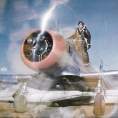Mooney Wing Tanks and Water
-
Members Online
- midlifeflyer
- Rick Junkin
- JCCV
- TravelingIA98
- Flyler
- TB bolts
- LANCECASPER
- Pinecone
- acekng1
- warrenehc
- N201MKTurbo
- tomgo2
- Hangar_46
- DCarlton
- TCC
- TangoTango
- sdmideas
- Bigdaddie
- PaulM
- Gary Bymers
- wombat
- NicholasM20
- Grumpy
- Sabremech
- missle301tv
- Cayman44
- shawnd
- Oscar Avalle
- druidjaidan
- highflyer77
- ProtoFly
- exM20K
- MikeOH
- MoonFlyer68
- PT20J
- Ron McBride
- Paul Thomas
- Utah20Gflyer
- IvanP


Recommended Posts
Join the conversation
You can post now and register later. If you have an account, sign in now to post with your account.